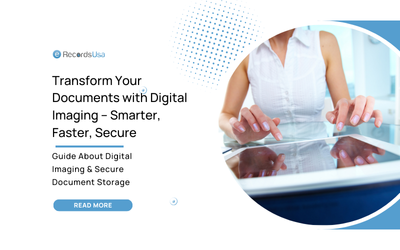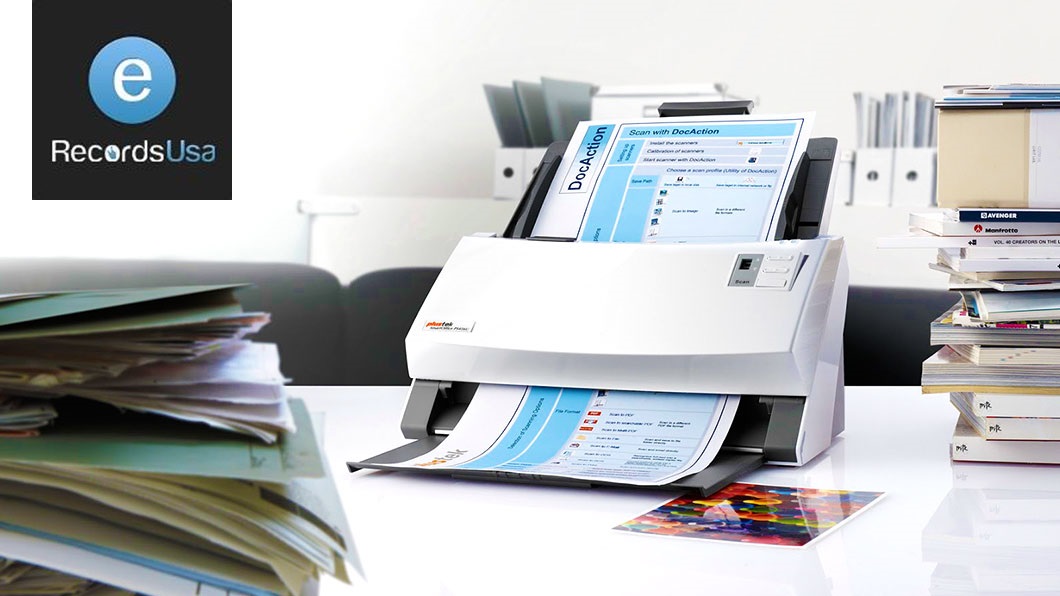Have you ever wondered what digital imaging is and how it has transformed the way we capture, store, and share information? From preserving historical archives and enhancing medical diagnostics to revolutionizing film restoration and imaging, the transition from paper-based records and analog photography to digital formats has reshaped how data is processed, retrieved, and protected across multiple industries.
Digital imaging is more than just a technological shift—it is the foundation of modern document preservation, healthcare advancements, and multimedia production. By converting physical documents, radiographic scans, and high-resolution photographs into electronic formats, digital imaging ensures faster access, enhanced security, and improved collaboration.
In today’s data-driven world, businesses rely on digital imaging to streamline document management and automate workflows, healthcare providers leverage it for early disease detection through digital radiography and MRI scans, and content creators use it to produce high-quality digital art, CGI animations, and 3D visualizations.
Whether it’s digitizing legal contracts, preserving historical manuscripts, processing digital pathology slides, or optimizing aerial photography for geographic mapping, digital imaging is at the core of modern data accessibility and security.
Why Documents Digitization Matters?
Whether managing business documents, medical records, legal contracts, or historical archives, the benefits of digitization extend far beyond space-saving storage—it enhances accessibility, compliance, and workflow automation.
- Increases Efficiency – Digital files can be retrieved in seconds compared to manual document searches.
- Improves Security & Compliance – Protects sensitive data with encrypted storage and controlled access.
- Reduces Storage Costs – Eliminates the need for physical cabinets, microfilm storage, and document warehousing.
- Future-Proofs Records – Digital archives remain intact, accessible, and scalable over time.
How Digital Imaging Works: The Basics
Digital imaging has transformed the way we capture, store, and share information across industries. The process of digital imaging revolves around three fundamental aspects:
- Image Capture – Converting physical visuals into digital data.
- Processing & Enhancement – Adjusting clarity, resolution, and metadata.
- Storage & Accessibility – Organizing, retrieving, and sharing digital files efficiently.
Digitizing Physical Media: The First Step in Digital Imaging
The transformation of physical documents, photographs, and archival records into digital formats is the foundation of modern digital imaging. The process of image capture and digitization varies depending on the type of media, its intended use, and the level of detail required. Below are the most common and effective methods used in the transition from physical to digital formats.
1. Document Scanning: Converting Paper into Digital Files
For businesses and institutions dealing with large volumes of paperwork, document scanning provides a secure and efficient way to transition from paper-based storage to searchable digital records.
- Digitizes invoices, legal contracts, HR records, and financial documents for easy retrieval.
- Reduces physical storage space and minimizes the risk of document loss or damage.
- Creates text-searchable PDFs using Optical Character Recognition (OCR) technology.
Best Used For: Business records, legal documents, corporate archives.
2. Photo and Film Scanning: Preserving Historical & Visual Media
Preserving photographs, negatives, slides, and film archives in a digital format ensures that valuable visual records remain intact and are protected from deterioration over time.
- Converts old photographs, artistic prints, and historical archives into high-resolution digital images.
- Allows for color correction, restoration, and retouching of old or damaged photos.
- Enables easy sharing, printing, and long-term archival storage.
Best Used For: Historical photo collections, personal archives, museums, and galleries.
3. Large Format Scanning: Digitizing Oversized Documents
Certain industries rely on large-format documents, such as engineering blueprints, architectural plans, and geographical maps, which require high-precision scanning to capture intricate details.
- Captures & digitize oversized materials in high resolution without distortion.
- Reduces manual handling of fragile or aging blueprints.
- Improves collaboration among professionals by allowing easy access to digital copies.
Best Used For: Construction firms, engineering consultants, cartographers, and city planning agencies.
4. Microfilm & Microfiche Scanning: Modernizing Archival Storage
Many institutions, such as government agencies, libraries, and financial organizations, have relied on microfilm and microfiche to store historical records and legal archives. However, these formats deteriorate over time and require specialized viewing equipment.
- Converts microfilm reels and fiche sheets into text-searchable digital files.
- Eliminates the need for bulky microfilm readers.
- Preserves historical archives, court records, and financial documents for long-term accessibility.
Best Used For: Libraries, legal institutions, government agencies, and corporate archives.
5. Medical Imaging Digitization: Enhancing Healthcare Record Management
X-rays, MRIs, CT scans, and ultrasound images play a critical role in diagnosing medical conditions and monitoring patient health. Digitizing these medical records improves efficiency in healthcare workflows.
- Ensures quick and seamless retrieval of patient imaging records.
- Allows medical professionals to store, share, and analyze diagnostic images digitally.
- Reduces the need for physical film storage, improving space utilization in hospitals.
Best Used For: Hospitals, diagnostic centers, radiology labs, and telemedicine providers.
Optimizing Image Quality & File Formats: Ensuring Clarity, Usability & Storage Efficiency
Digitizing documents, photographs, and medical scans is only half the process—the next step is ensuring that the quality, resolution, and file format align with the intended use of the digital files. A poorly scanned document with low resolution or improper file format can lead to blurred text, missing details, and large storage inefficiencies.
By selecting the right resolution settings and file formats, organizations can balance image clarity, file size, and long-term usability.
1. Understanding Image Resolution: Pixels, DPI, and Clarity
Image resolution refers to the number of pixels or dots per inch (DPI) in a digital image. The higher the resolution, the sharper and more detailed the image. However, excessive resolution can lead to large file sizes without significant quality improvement, so it’s essential to choose the right balance.
Recommended Resolution Based on Use Case:
- Document Scanning: 300 DPI (Standard) | 600 DPI (High-Quality Archival)
- Photographs & Film Scanning: 600 DPI – 1200 DPI (For detailed reproduction)
- Microfilm & Microfiche Scanning: 300 – 400 DPI (For OCR & text searchability)
- Medical Imaging: 16-bit grayscale or higher for X-rays, MRIs, and CT scans
💡 Key Takeaway: Higher DPI is needed for detailed prints and archival storage, while lower DPI is acceptable for standard business document scanning to optimize file size.
2. Choosing the Right File Format: Compression vs. Quality
Each file format serves a different purpose, impacting image quality, compression, searchability, and compatibility. Selecting the right format ensures optimal storage efficiency and long-term usability.
Common File Formats & Their Best Use Cases:
| File Format | Best For | Pros | Cons |
|---|---|---|---|
| Documents, Reports, Legal Files | OCR-enabled, searchable, widely compatible | Can be large in size | |
| TIFF | High-quality archival storage | Lossless compression, preserves detail | Larger file sizes, not web-friendly |
| JPEG | Photos, Web Images | Small file size, widely supported | Lossy compression reduces quality |
| PNG | Digital Media, Transparent Images | High-quality, lossless | Larger than JPEG |
| DICOM | Medical Imaging (X-rays, MRIs, CTs) | Industry standard for healthcare | Not used for general document storage |
Key Takeaway:
- Use PDF with OCR for searchable documents.
- TIFF is ideal for long-term archival storage where detail preservation is critical.
- JPEG is best for compressed images that don’t require exact quality replication.
- DICOM is mandatory for medical imaging and patient record standardization.
3. File Compression: Managing Storage Without Losing Quality
Large image files can consume excessive storage and slow down retrieval speeds. Using compression techniques can help optimize storage without compromising readability or quality.
Types of Compression:
- Lossless Compression (TIFF, PNG, PDF/A) – Maintains full image quality but results in larger file sizes.
- Lossy Compression (JPEG, some PDF formats) – Reduces file size by removing unnecessary image data, but can degrade quality.
Best Practices for File Compression:
- Use lossless formats (TIFF, PNG) for archives and high-resolution storage.
- For scanned documents, PDFs should be optimized with OCR while maintaining legibility.
- For photos and media, JPEG compression should be kept at a high setting to prevent artifacts.
4. Metadata & Indexing: Improving Searchability in Digital Archives
Beyond just image quality, properly indexed digital files ensure faster searchability and categorization. Metadata helps organize and retrieve files efficiently.
Types of Metadata:
- OCR (Optical Character Recognition): Converts scanned text into searchable digital text (for PDFs & TIFFs).
- EXIF (Exchangeable Image File Format): Stores camera settings, location data, and timestamps for photographs.
- DICOM Metadata: Used in medical imaging to store patient information, scan details, and diagnostic notes.
- Custom Indexing: Allows businesses and libraries to categorize documents based on keywords, document type, and date.
Key Takeaway:
- OCR-enabled PDFs allow text-searchable documents.
- Custom metadata improves file organization and retrieval for large archives.
- DICOM metadata ensures proper patient record-keeping in healthcare.
Final Thoughts: Ensuring Quality & Efficiency in Digital Imaging
By choosing the right resolution, file format, and compression settings, organizations can ensure that digitized records remain clear, accessible, and storage-efficient. Implementing metadata and OCR technology further enhances searchability and organization.
Why Businesses Trust eRecordsUSA for Document Scanning?
- Certified & Trusted Experts – As a Certified SBA 8(a) Minority & Woman-Owned Small Business, we bring years of expertise in secure document digitization.
- Industry-Leading Security & Compliance – We follow strict security protocols to ensure HIPAA, GDPR, and industry regulatory compliance, protecting confidential business records, legal files, and sensitive patient data.
- High-Quality Digital Conversion – Our state-of-the-art scanners capture every detail, providing high-resolution, text-searchable digital documents.
- Custom Solutions for Every Industry – Whether you need legal document scanning, medical record digitization, or large-format blueprint scanning, we offer tailored solutions to meet your needs.
- 100% In-House Processing for Maximum Security – Unlike other providers, all document scanning is done in-house by vetted professionals under CCTV surveillance—no outsourcing, no risks.
Get a Free Consultation & See How eRecordsUSA Can Help Your Business!
Stop wasting time searching for lost paperwork. Start working smarter today!
- FREE consultation with our document experts – Find out the best scanning and document management solution for your business.
- Fast, hassle-free service – Our team ensures a smooth transition to a paperless office.
- No commitment required – Learn how you can save time, cut costs, and improve security with digital records.
People Also Ask
1. What are the best practices for long-term digital document preservation?
- For long-term digital preservation, it’s crucial to use high-resolution scanning, store files in lossless formats like PDF/A or TIFF, and implement redundant backups in cloud storage and local servers. Regularly updating file formats to prevent obsolescence is also recommended.
2. How do I ensure my digitized documents remain legally valid?
- To maintain legal validity, documents should be scanned in high-resolution formats, include metadata for authentication, and be OCR-enabled for searchability. Implementing digital signatures and encryption ensures compliance with regulatory requirements such as HIPAA, GDPR, and SOC 2.
3. What are the risks of poor-quality scanning, and how can they be avoided?
- Low-quality scans can lead to blurred text, data loss, and compliance issues. Avoid these risks by using professional-grade scanners, setting the appropriate DPI (300–600 for documents, 1200+ for images), and ensuring automated image enhancement to improve readability.
4. Is it possible to recover lost or damaged microfilm and microfiche records through digitization?
- Yes, specialized restoration scanning techniques can recover faded, brittle, or deteriorated microfilm/microfiche records. High-resolution scanning with image enhancement software can restore contrast and legibility, ensuring critical data is preserved.
5. What factors should I consider before choosing a document scanning service provider?
- Before selecting a document scanning company, evaluate:
- Security Measures – Ensure compliance with HIPAA, GDPR, and SOC 2 standards.
- OCR & Metadata Tagging – Does the provider offer searchable PDF and intelligent indexing?
- Data Backup & Recovery – Is there cloud storage integration and disaster recovery planning?
- Industry Experience – Look for expertise in handling sensitive records like legal, medical, and financial documents.
6. How do I transition my business from paper-based to fully digital document management?
- The transition process includes:
- Assessing current records – Identify documents that need scanning and archiving.
- Choosing the right scanning format – Decide between PDF, TIFF, OCR-enabled formats.
- Implementing a Document Management System (DMS) – Ensure seamless access and organization.
- Setting up security protocols – Encrypt files, limit access, and enable cloud backup solutions.
- Training staff & optimizing workflows – Ensure efficient usage of the digital archive for maximum productivity.
Still Have Questions? Get Expert Guidance from eRecordsUSA!
Have more questions about digital document management, compliance, or best scanning practices? Our experts at eRecordsUSA are here to help!
📞 Call Us Today: +1.510.900.8800
Go digital with eRecordsUSA—Your Partner in Secure & Efficient Document Management!










